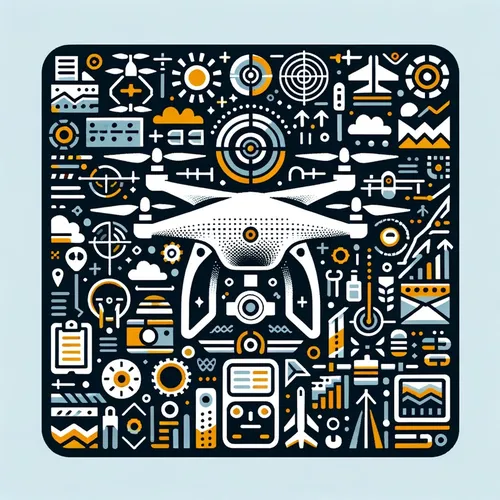Drones Soar in 2025: Juicy Opportunities, Sizzling Markets, and Skyrocketing Profits!
- Author
- Quiet. Please
- Published
- Sat 23 Aug 2025
- Episode Link
- https://www.spreaker.com/episode/drones-soar-in-2025-juicy-opportunities-sizzling-markets-and-skyrocketing-profits--67486980
This is you Professional Drone Pilot: Flight Tips & Industry Updates podcast.
Professional drone pilots are stepping into a dynamic landscape shaped by rapid advances in technology, updated regulations, and evolving business opportunities. As we move into August 2025, mastering advanced flight techniques remains essential for commercial drone operators, aerial photographers, and inspection specialists. Techniques like multi-axis maneuvering, autonomous waypoint programming, and real-time terrain following allow for safer, more precise data capture and creative aerial imaging. Drone mapping and surveying demand not only a firm grip on your controls but also proficiency with onboard sensors and AI-driven analytics for automated site inspection and crop monitoring.
Equipment maintenance has also become more critical to achieving reliability and longevity. Implementing regular maintenance schedules—checking propeller integrity, monitoring battery health, and updating firmware—can prevent flight mishaps and maximize uptime. For those looking to optimize performance, the latest flagship models like the DJI Mavic 4 Pro offer improved flight efficiency and robust obstacle avoidance, while budget-friendly options like the DJI Air 3S make professional results attainable for smaller businesses.
The commercial drone market is expanding rapidly. Stellar Market Research notes that worldwide, the commercial drone market will grow at a compound annual rate near fifteen percent, reaching about sixty-eight billion United States dollars by 2032. Fully autonomous drones are leading this charge, as artificial intelligence enables longer-range, Beyond Visual Line of Sight missions vital for logistics, agriculture surveys, and infrastructure inspection. For listeners considering new ventures, Pilot Institute highlights top opportunities: aerial photography for real estate, construction site monitoring, agricultural analysis, and drone delivery. Real estate businesses alone reported homes with aerial tours were sixty-eight percent more likely to sell, making drone pilots integral to property marketing.
Navigating certification and licensing remains essential. In the United States, the Federal Aviation Administration requires pilots to be at least sixteen, pass a rigorous knowledge exam covering airspace, weather, emergency procedures, and operational rules, and complete recurrent training every two years. This ensures pilots maintain awareness of evolving regulations, including those for Remote ID broadcasting and flying in controlled airspace.
Managing client relations and pricing is another core responsibility. Establishing clear scope-of-work agreements, providing sample deliverables, and offering tiered pricing can promote transparency and win trust. Including post-production services—for example, editing and color grading—lets you charge premium rates, especially for high-impact marketing campaigns.
Weather considerations and flight planning should never be overlooked. Learn to interpret aviation weather sources and understand how wind, precipitation, and thermal currents influence flight stability and image quality. Incorporating automated weather alerts into your preflight checks can prevent lost time and equipment damage.
Insurance and liability issues are top-of-mind in 2025. As coverage options broaden, insurers are factoring in the adoption of risk mitigation measures such as real-time geofencing and operator training. Adhering to flight logs and maintaining up-to-date certifications can lower premiums and help defend against liability claims.
Recent news highlights the move toward regulatory clarity for Beyond Visual Line of Sight operations, major investments in drone delivery by logistics giants, and global collaborations in environmental monitoring to combat wildfires and track endangered wildlife. For example, new FAA rules are streamlining...
